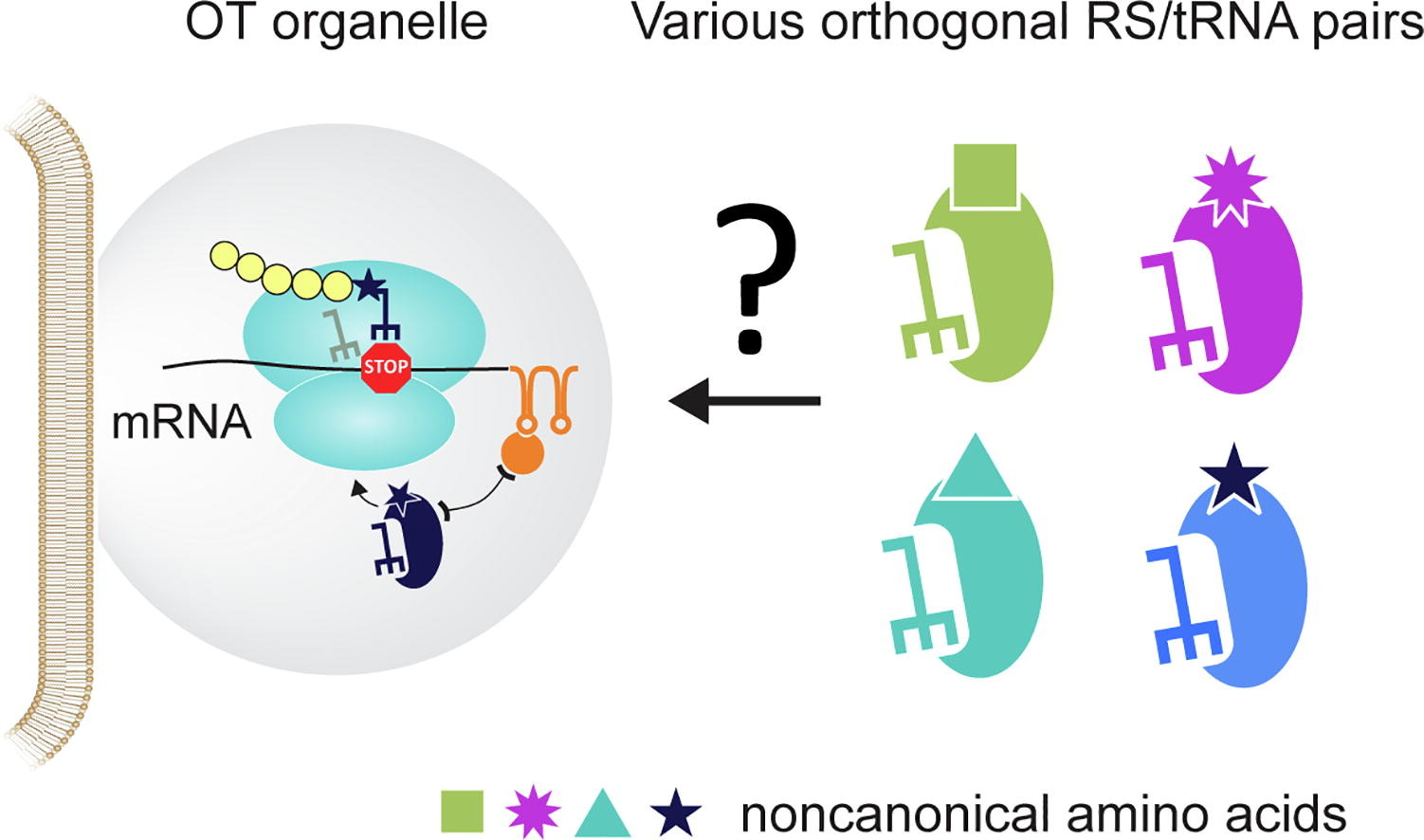Another SFB1551 paper is out! “Tuning the Functionality of Designer Translating Organelles with Orthogonal tRNA Synthetase/tRNA Pairs” was published on the Journal of Molecular Biology.
Abstract
Site-specific incorporation of noncanonical amino acids (ncAAs) can be realized by genetic code expansion (GCE) technology. Different orthogonal tRNA synthetase/tRNA (RS/tRNA) pairs have been developed to introduce a ncAA at the desired site, delivering a wide variety of functionalities that can be installed into selected proteins. Cytoplasmic expression of RS/tRNA pairs can cause a problem with background ncAA incorporation into host proteins. The application of orthogonally translating organelles (OTOs), inspired by the concept of phase separation, provides a solution for this issue in mammalian cells, allowing site-specific and protein-selective ncAA incorporation. So far, only Methanosarcina mazei (Mm) pyrrolysyl-tRNA synthetase (PylRS) has been used within OTOs, limiting the method’s potential. Here, we explored the implementation of four other widely used orthogonal RS/tRNA pairs with OTOs, which, to our surprise, were unsuccessful in generating mRNA-selective GCE. Next, we tested several experimental solutions and developed a new chimeric phenylalanyl-RS/tRNA pair that enables ncAA incorporation in OTOs in a site-specific and protein-selective manner. Our work reveals unaccounted design constraints in the spatial engineering of enzyme functions using designer organelles and presents a strategy to overcome those in vivo. We then discuss current limitations and future directions of in-cell engineering in general and protein engineering using GCE specifically.
Congratulations to Mikhail E. Sushkin, Marius Jung (SFB1551 IRTG student), and Edward Lemke!

